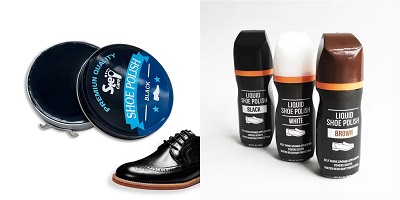When it comes to maintaining leather shoes, the type of polish you use can make a significant difference in both the appearance and longevity of your footwear. Leather shoe enthusiasts often debate between wax and liquid polishes, each offering distinct advantages and drawbacks. Understanding these differences is crucial in making an informed decision to keep your shoes looking their best.
The Convenience of Liquid Polish
Liquid polish is favored for its unparalleled convenience and speed. Its easy application and quick drying time make it a go-to option for those in a rush. Simply applying the liquid polish with an applicator sponge or brush can instantly revive the shine of your leather shoes, making it a practical choice for daily use.
However, despite its convenience, liquid polish should not be relied upon for long-term care, especially for high-end leather shoes. One significant drawback of liquid polish is its potential to dry out the leather over time. The alcohol and other chemicals present in liquid polishes can strip the natural oils from the leather, leading to cracks and a loss of suppleness. This makes liquid polish suitable for occasional use or as a quick fix, but not ideal for maintaining the health of high-quality leather shoes in the long run.
The Benefits of Wax Polish
Wax polish, on the other hand, offers a more comprehensive approach to shoe care, albeit with a more time-consuming process. The application of wax polish involves cleaning the shoes, applying the wax, and then buffing to a shine. This meticulous process not only enhances the appearance of the leather but also provides a protective layer against moisture and dirt.
Wax polish has the advantage of nourishing the leather, thanks to its natural oils and waxes. These ingredients help to maintain the leather’s moisture balance, preventing it from drying out and cracking. Additionally, the protective barrier formed by the wax polish can extend the life of your shoes by shielding them from environmental damage. For those who own high-end leather shoes, investing the time in applying wax polish can pay off in the long run by keeping the leather in top condition.
The Premium Option: Cream Polish
For those willing to invest in the best care for their leather shoes, cream polish is an excellent choice. Cream polishes often contain higher-quality natural ingredients, including lanolin and carnauba wax, which are gentler on the leather. These polishes not only enhance the color and finish of the shoes but also provide deep conditioning, ensuring that the leather remains soft and supple.
While cream polish tends to be more expensive than both wax and liquid polishes, its benefits for high-end leather shoes are unmatched. The rich conditioning properties of cream polish can revitalize even the most worn-out shoes, making it a worthy investment for those who take pride in their footwear.
Making the Right Choice
Ultimately, the choice between wax, liquid, and cream polish depends on your priorities and the type of leather shoes you own. For everyday convenience and quick touch-ups, liquid polish is a practical option, but it should be used sparingly to avoid long-term damage. Wax polish is ideal for regular maintenance, providing both aesthetic and protective benefits, making it a solid choice for anyone serious about shoe care. For those with high-end leather shoes, cream polish offers the ultimate in conditioning and preservation, albeit at a higher cost.
In conclusion, maintaining the elegance and durability of leather shoes requires choosing the right type of polish. While liquid polish offers convenience, it is not suitable for long-term use on high-quality leather. Wax polish, though time-consuming to apply, provides essential nourishment and protection. For the highest level of care, cream polish stands out for its superior conditioning properties. By understanding these differences, you can ensure your leather shoes remain in pristine condition for years to come.
Post time: May-24-2024






